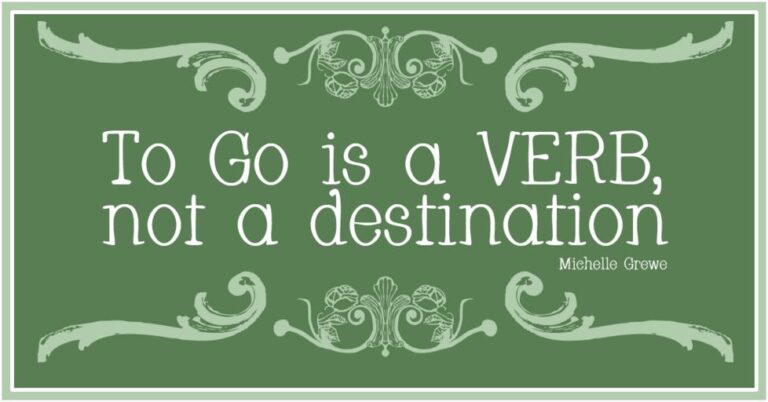Verbs are the action words in a sentence that describe what the subject is doing. Along with nouns, verbs are the main part of a sentence or phrase, telling a story about what is taking place.
FINITE AND NON-FINITE VERBS
All verbs can be broadly classified into two categories: finite and non-finite.
- Finite Verbs: These are the main verbs in a sentence that change their form based on the subject and the tense of the action. They can be further classified into:
- Regular Verbs: These follow a predictable pattern of conjugation, typically adding “-ed” or “-d” to their base form to indicate past tense or past participle.
- Irregular Verbs: These do not follow a standard conjugation pattern. Some change their form completely, while others remain the same in all their forms.
- Linking Verbs: These do not express action but instead connect the subject of the verb to additional information about the subject.
- Auxiliary Verbs: Also known as helping verbs, these are used together with a main verb to show the verb’s tense or to form a question or negative.
- Modal Verbs: These are specific types of auxiliary verbs that express necessity or possibility.
- Non-Finite Verbs: These remain the same regardless of the subject or the tense. They can be further classified into:
- Infinitives: The raw, unaltered form of a verb, usually with the word “to”.
- Gerunds: Verbs that have put on an “-ing” disguise and are acting as nouns in the sentence.
- Participles: Verbs that have transformed into “-ed” or “-ing” adjectives in the sentence.
There are other types of verbs like transitive/intransitive (those classified based on whether they have a direct object or not) and action verbs (those that express physical or mental actions), which can be both finite and non-finite.
Here are examples of transitive and intransitive verbs being both finite and non-finite:
- Transitive Verbs:
- Finite: In the sentence “She reads the book”, “reads” is a finite transitive verb because it changes based on the subject (she) and tense (present), and it has a direct object (the book).
- Non-finite: In the sentence “I like to read books”, “to read” is a non-finite transitive verb. It’s an infinitive that doesn’t change with the subject or tense, and it has a direct object (books).
- Intransitive Verbs:
- Finite: In the sentence “He runs fast”, “runs” is a finite intransitive verb because it changes based on the subject (he) and tense (present), and it doesn’t have a direct object.
- Non-finite: In the sentence “I enjoy running”, “running” is a non-finite intransitive verb. It’s a gerund that doesn’t change with the subject or tense, and it doesn’t have a direct object.
Whether a verb is transitive or intransitive depends on if it has a direct object. Whether a verb is finite or non-finite depends on if it changes based on the subject and tense. A verb can fall into more than one category based on its usage in a sentence.
Here are examples of action verbs being both finite and non-finite:
- Finite Action Verb: In the sentence “She reads a book every night”, “reads” is a finite action verb. It’s finite because it changes based on the subject (she) and tense (present), and it’s an action verb because it expresses the action that the subject is doing.
- Non-Finite Action Verb: In the sentence “I love to read”, “to read” is a non-finite action verb. It’s non-finite because it doesn’t change with the subject or tense, and it’s an action verb because it expresses an action.
Now, let´s delve into the specific different types of verbs
REGULAR VERBS
Regular verbs are verbs that follow a regular conjugation pattern. This means that you form their past tense and past participle by adding “-ed” or “-d” to the base form of the verb. For example, “talk” becomes “talked” in the past tense and past participle.
Regular verbs are like the well-behaved students of the verb world. They follow the rules when it comes to changing their form to indicate different tenses. Specifically, they add “-ed” or “-d” to their base form to create the simple past tense and past participle.
Take the verb “to jump” as an example. Here’s how it transforms:
- Base form: jump
- Simple past tense: jumped
- Past participle: jumped
The simple past tense is used when you’re talking about an action that was completed in the past. For example, “Lisa jumped over the puddle.”
The past participle can be used with “have” to form a specific verb tense or as an adjective. For instance, “I have jumped over many puddles” or “The jumped hurdle was high.”
IRREGULAR VERBS
Irregular verbs are the mavericks of the verb world. They don’t follow the standard rules of verb conjugation when it comes to changing their form to indicate different tenses. Unlike regular verbs, which simply add “-ed” or “-d” to their base form to create the simple past tense and past participle, irregular verbs do not have a fixed pattern of conjugation.
Some irregular verbs change their form completely. For instance, consider the verb ‘to fly’:
- Base form: fly (e.g., Birds fly south for the winter.)
- Simple past tense: flew (e.g., Yesterday, the birds flew south.)
- Past participle: flown (e.g., The birds have flown south for the winter.)
However, some irregular verbs, like ‘put’, remain the same in all their forms:
- Base form: put (e.g., I put the book on the table.)
- Simple past tense: put (e.g., Yesterday, I put the book on the table.)
- Past participle: put (e.g., I have put the book on the table.)
Here are a few more examples of irregular verbs that do not change their form in the past tense or past participle:
- Cut
- Base form: cut (e.g., I cut the paper.)
- Simple past tense: cut (e.g., Yesterday, I cut the paper.)
- Past participle: cut (e.g., I have cut the paper.)
- Hit
- Base form: hit (e.g., I hit the ball.)
- Simple past tense: hit (e.g., Yesterday, I hit the ball.)
- Past participle: hit (e.g., I have hit the ball.)
- Let
- Base form: let (e.g., I let him go.)
- Simple past tense: let (e.g., Yesterday, I let him go.)
- Past participle: let (e.g., I have let him go.)
- Set
- Base form: set (e.g., I set the table.)
- Simple past tense: set (e.g., Yesterday, I set the table.)
- Past participle: set (e.g., I have set the table.)
Irregular verbs are those that do not follow a predictable pattern of conjugation. Learning them often involves memorizing their different forms.
ACTION VERBS
Action verbs, also known as dynamic verbs, are verbs that express an action that a subject can do. This action can be physical or mental.
Here are some more details:
- Physical Action Verbs: These verbs are used to express any action that a person or thing in the sentence physically does. For example, in the sentence “The cat jumps onto the table,” the word “jumps” is a physical action verb.
- Mental Action Verbs: Mental action verbs describe cognitive, non-physical actions such as thinking, understanding, learning, or deciding. In other words, they describe actions that you can’t see because they happen in the mind. However, they are still considered action verbs because they describe something that a subject does. The following are some examples:
- Think: This verb describes the action of using one’s mind to produce thoughts. For example, “I think about the problem.”
- Understand: This verb describes the action of grasping the meaning, explanation, or cause of something. For example, “She understands the lesson.”
- Learn: This verb describes the action of acquiring knowledge or skills. For example, “They learn French at school.”
- Decide: This verb describes the action of making a choice from a number of alternatives. For example, “He decides to go home.”
Action verbs are key to driving action and giving your sentences a sense of direction. They make it clear what the subject is doing.
STATIVE OR STATE VERBS
Stative verbs or state verbs describe a state or condition, rather than an action. They often relate to thoughts, emotions, relationships, senses, states of being, and measurements.
Here are some examples:
- Thoughts: believe, know, understand, think (when it means “have an opinion”), suppose, doubt, remember, forget, etc.
- Example: “I believe in you.”
- Emotions: love, hate, like, dislike, prefer, fear, feel (when it means “have an opinion”), etc.
- Example: “She loves chocolate.”
- Relationships: belong, need, owe, own, possess, etc.
- Example: “This book belongs to me.”
- Senses: see, hear, smell, taste, sound, seem, appear, look (when it means “seem”), etc.
- Example: “The cake tastes delicious.”
- States of Being: be, exist, mean, etc.
- Example: “I am a teacher.”
- Measurements: weigh, contain, cost, etc.
- Example: “The box weighs two pounds.”
It’s important to note that some verbs can be both action verbs and stative verbs, depending on the context. For example, the verb “think” is an action verb in the sentence “I am thinking about you” (where it indicates the action of thinking), but it’s a stative verb in the sentence “I think you are amazing” (where it indicates an opinion or belief).
LINKING VERBS
Linking verbs do not express action. Instead, they connect the subject of the verb to additional information about the subject. Common linking verbs include “is”, “are”, “was”, “were”, “seem”, and “become”.
In the sentence “The sky is blue”, “is” is a linking verb that connects the subject “sky” to additional information about it, which is “blue”.
AUXILIARY VERBS
Auxiliary verbs, also known as helping verbs, are used in conjunction with main verbs to express the tense, mood, voice, or aspect of the main verb. Essentially, they help to convey additional information about the action or state expressed by the main verb.
There are three primary auxiliary verbs in English: be, have, and do.
- Be: Used for continuous and passive forms.
- Example (continuous): “She is running a marathon.”
- Example (passive): “The marathon is run by her.”
- Have: Used for perfect forms.
- Example: “She has run a marathon.”
- Do: Used for emphasis or to form questions or negatives in simple present and simple past tenses.
- Example (emphasis): “She does run marathons.”
- Example (question): “Do you run marathons?”
- Example (negative): “She does not run marathons.”
In addition to these, there are also modal auxiliary verbs including can, could, may, might, shall, should, will, would, and must. These verbs are used to express various states of unreality such as ability, possibility, permission, or obligation. The modal auxiliary verb always comes before any other auxiliary verbs and the main verb.
For example, in the sentence “She must have gone to the store,” “must” is a modal auxiliary verb expressing obligation, “have” is an auxiliary verb indicating the perfect aspect, and “gone” is the main verb.
MODAL VERBS
Modal verbs are a special type of auxiliary verb that express modality. Modality is a grammatical category that deals with the speaker’s attitude towards the action or state described by the main verb. This can include things like necessity, possibility, ability, permission, prediction, and more.
Here’s a bit more detail about the modal verbs you mentioned:
- Can/Could: These verbs express ability, possibility, or permission. “Can” is used for present and future, while “could” is used for past or conditional.
- Example (ability): “She can swim very well.”
- Example (possibility): “It could rain tomorrow.”
- Example (permission): “You can go now.”
- May/Might: These verbs express possibility or permission. “May” is more formal than “can” when asking for or giving permission.
- Example (possibility): “She may arrive late.”
- Example (permission): “You may leave the table.”
- Must: This verb expresses necessity or strong recommendation.
- Example (necessity): “You must finish your homework before you can play.”
- Example (recommendation): “You must see this movie. It’s excellent.”
- Shall/Should: “Shall” is used to offer or suggest something, or to ask for advice. “Should” is used to give advice or talk about what is right or correct.
- Example (offer): “Shall I open the window?”
- Example (advice): “You should eat more vegetables.”
- Will/Would: “Will” is used to talk about future events or to make promises or offers. “Would” is used to talk about a situation that is imaginary or unreal, or to make polite requests.
- Example (future): “I will call you tomorrow.”
- Example (promise): “I will not tell anyone your secret.”
- Example (request): “Would you pass the salt, please?”
Modal verbs are followed by the base form of the main verb and they do not change form according to the subject. For example, we say “She can swim” and not “She cans swim”.
PAST PARTICIPLE
The past participle is one of the main verb forms in English, and it’s used in several different ways:
- Perfect Tenses: The past participle is used with “have” or “has” to form the present perfect tense, and with “had” to form the past perfect tense. These tenses are used to describe actions that are completed relative to the present or another point in time.
- Example (present perfect): “She has finished her homework.”
- Example (past perfect): “He had left before I arrived.”
- Passive Voice: The past participle is used with forms of “be” to create the passive voice, which is used when the focus is on the action, not who is performing the action.
- Example: “The cake was eaten by the children.”
- Adjectives: As you mentioned, past participles can often be used as adjectives to describe a noun. In this case, they usually describe the result of an action.
- Example: “I’m so tired.” (The result of working hard or not getting enough sleep)
- Example: “The window is broken.” (The result of someone or something breaking the window)
- Adverbial Phrases: Past participles can be used to start adverbial phrases, which provide more information about the action in a sentence.
- Example: “Bored with the lecture, she started doodling.”
It’s important to note that while many regular verbs form the past participle by adding “-ed” to the base verb, there are many irregular verbs in English that have unique past participle forms. For example, the past participle of “write” is “written”, not “writed”.
PRESENT PARTICIPLE
The present participle is a form of a verb that typically ends in “-ing” and is used to indicate an ongoing action. For example, “talking” is the present participle of the verb “talk”.
In the sentence “The water is boiling”, “boiling” is the present participle of the verb “boil”. It indicates an ongoing action.
TRANSITIVE VERBS
Transitive verbs are action verbs that have a direct object. This means the action of the verb is done to someone or something. Most verbs are transitive. For example, in the sentence “She reads books,” “reads” is a transitive verb and “books” is its object.
INTRANSITIVE VERBS
Intransitive verbs are action verbs but unlike transitive verbs, they do not have a direct object receiving the action. For example, in the sentence “She runs,” “runs” is an intransitive verb; it has no direct object.
CONCLUSION
In conclusion, understanding the different types of verbs and their uses can help improve your grammar and make your writing more compelling. Remember, verbs are not just about actions. They also can convey existence, condition, or occurrence. So, choose your verbs wisely to make your writing more engaging.


